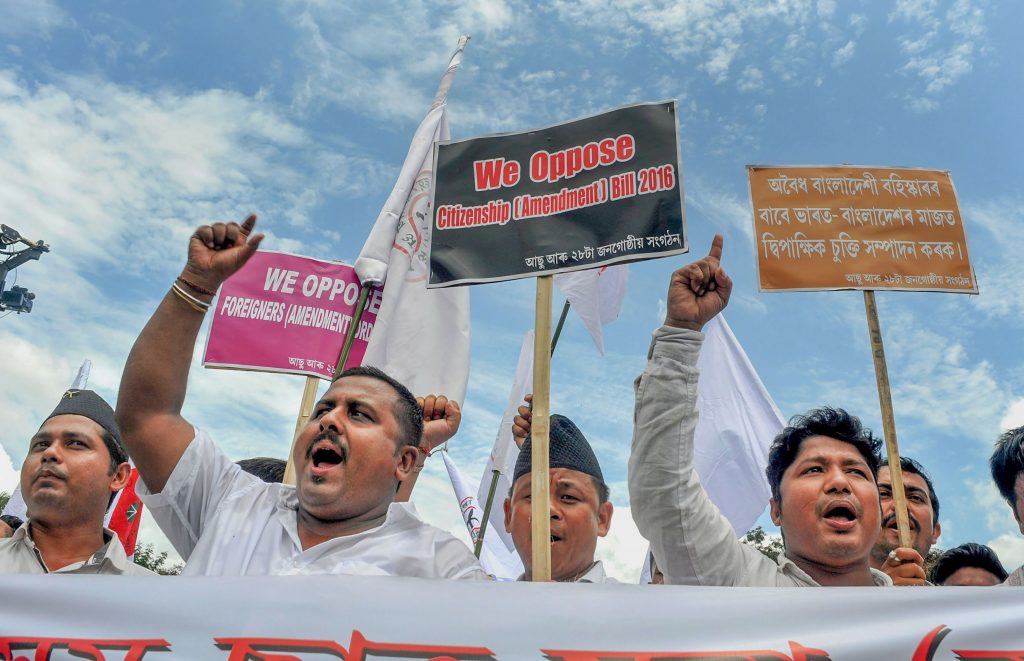
In contemporary India, identity is not a fixed inheritance but a living, shifting terrain — a set of affiliations, exclusions, and recognitions that define how people relate to the state, to one another, and to themselves. It permeates legislation and protest slogans, social media algorithms and classroom syllabi, electoral strategies and everyday encounters. At its core lies a fundamental question: Who counts as Indian, and on what terms?
The last decade has witnessed an intensified negotiation over identity in India, driven by a convergence of political majoritarianism, social media proliferation, legal reforms, and grassroots mobilizations. What emerges is a complex, sometimes contradictory picture: of assertion and anxiety, empowerment and erasure, belonging and marginalization — all unfolding within the world’s largest democracy.
Religion and the Reconfiguration of National Identity
Religious identity has long shaped Indian political life, but the 2010s and 2020s mark a new phase of consolidation around majoritarian themes. Since the electoral ascent of the Bharatiya Janata Party (BJP) in 2014, the idiom of national identity has increasingly aligned with a civilizational narrative rooted in Hindu cultural pride. The embrace of religious symbols in state functions, the transformation of historical narratives in textbooks, and the reimagining of public spaces through statues and renaming campaigns all reflect a broader attempt to redefine what it means to be Indian.
Legislative developments like the Citizenship Amendment Act (CAA) of 2019 have further sparked debate over the role of religion in defining citizenship. The CAA provides a path to Indian citizenship for undocumented migrants from six religious communities — Hindus, Sikhs, Buddhists, Jains, Parsis, and Christians — from Pakistan, Afghanistan, and Bangladesh, provided they arrived in India before December 2014. The stated rationale is to offer protection to religious minorities fleeing persecution in neighboring Islamic-majority countries.
Critics of the law argue that its selective religious criteria mark a departure from the secular foundations of the Indian Constitution and risk marginalizing Indian Muslims, particularly when seen alongside proposals for a nationwide National Register of Citizens (NRC). Supporters, on the other hand, view the CAA as a humanitarian gesture aligned with India’s historical role as a refuge for persecuted minorities.
Despite their differences, the protests echoed a common fear — that India’s promise of equal citizenship was being redefined through the lens of religious majoritarianism.
Caste: Persistence and Transformation
If religion dominates headlines, caste remains the subterranean structure shaping social mobility, political representation, and everyday experience. The last decade has seen both the resurgence and reconfiguration of caste-based identity. Movements demanding inclusion in the Other Backward Classes (OBC) list — by Patidars in Gujarat, Marathas in Maharashtra, and Jats in Haryana — reveal how identity today is not merely about historical injustice but about access to opportunity.
Simultaneously, Dalit and Adivasi communities have forged new avenues of assertion. The protests following atrocities in Una (2016), Bhima Koregaon (2018), and Hathras (2020) illustrate how identity-based mobilization is now intertwined with constitutional language and digital communication. Social media platforms have enabled the rise of Dalit influencers, independent journalists, and anti-caste thinkers, who bypass traditional gatekeeping to craft their own narratives.
Yet, discrimination persists — subtly in urban employment and overtly in rural hierarchies, housing practices, marriage patterns, and digital hate campaigns. Affirmative action has expanded representation, but structural equality remains an unfinished project. In this, caste is both visible and hidden — enduring in its effects, evolving in its expressions.
Region, Language, and the Federal Tension
India’s federalism, often praised for accommodating linguistic and regional diversity, is under renewed stress. The question of identity here is both cultural and administrative. Disputes over language policy, resource allocation, and institutional autonomy have gained prominence in recent years.
In southern states, particularly Tamil Nadu and Kerala, resistance to Hindi imposition has re-emerged — framed not as linguistic chauvinism but as a defense of federal principles. In the Northeast, tensions around migration, ethnic recognition, and territorial claims continue to simmer. Meanwhile, states like Punjab and West Bengal have asserted their political distance from the Centre in symbolic and substantive ways — from welfare schemes to digital surveillance laws.
Linguistic identity, once presumed stable after the reorganization of states in 1956, has also evolved in the digital age. Regional OTT platforms, vernacular influencers, and bilingual schooling reflect a more confident assertion of local language cultures. For many, the regional is no longer marginal — it is a site of aspiration, not just resistance.
Gender, Sexuality, and Intersectional Citizenship
India’s gender landscape is marked by a simultaneous expansion and contestation of identity claims. Legal verdicts — decriminalizing homosexuality (2018), recognizing transgender rights (2014), and striking down adultery laws (2018) — suggest a progressive trajectory. Yet, these gains coexist with persistent inequalities, backlash, and politicized control over women’s bodies and choices.
The hijab controversy in Karnataka (2022) epitomized this tension: was it a matter of religious freedom or institutional uniformity, of gendered oppression or personal agency? Such questions defy simple resolution, exposing the multiple and overlapping identities that citizens inhabit.
The transgender community, though legally acknowledged, continues to struggle for real inclusion. Access to housing, healthcare, education, and employment remains limited. Similarly, queer individuals outside urban, English-speaking circles face social ostracism despite the legal recognition of rights.
Identity here is not merely about visibility. It is about safety, voice, and legitimacy — about who gets to participate fully in public life and on what terms.
Digital Media and the Algorithmic Self
Perhaps no space has shaped identity more dramatically in the 2020s than the internet. With over 850 million users, India’s digital public sphere is vast, volatile, and often vitriolic. Social media platforms enable new forms of self-expression — from Dalit poetry on Instagram to LGBTQ+ TikTok creators, from regional news channels on YouTube to caste-based meme pages.
But the same platforms also host polarization. Communal rumors, casteist abuse, and nationalist dog-whistles often go viral, fueled by algorithmic incentives that privilege outrage over nuance. The digital world flattens complex identities into categories for targeted content and surveillance.
Government regulation — through IT Rules, takedown orders, and data localization mandates — has added a new layer of contestation. The state now plays an active role in shaping the contours of permissible identity speech online, often under the rubric of national security or public order.
What emerges is a paradox: the internet is both democratizing and disciplining. It expands the range of who can speak but also sharpens the risks of speaking.
The Nation and Its Others
Beneath all these layers is the deeper question of the national imaginary — who embodies the Indian nation, and who is cast as its outsider. In recent years, labels like anti-national, urban Naxal, or tukde-tukde gang have become tools of political rhetoric, often deployed against students, activists, or dissenting citizens.
Citizenship itself has acquired a more performative dimension. It is no longer merely a legal status but a moral identity — tied to visible patriotism, cultural conformity, and historical loyalty. The constitutional vision of citizenship as inclusive and egalitarian finds itself in negotiation with newer ideals of discipline, unity, and hierarchy.
For many, these shifts feel alienating. For others, they mark a long-overdue correction of perceived secular excesses or elite dominance. Either way, the idea of the Indian citizen is being redefined — not just in courts or parliaments, but in classrooms, comment threads, and collective memory.
Subscribe to Our Newsletter
Get the latest CounterCurrents updates delivered straight to your inbox.
Conclusion
Identity in India today is not a settled category; it is a site of continual construction and contestation. It reflects historical legacies, but it also speaks to contemporary anxieties — about employment, security, recognition, and dignity. It is shaped by the state, by markets, and by citizens themselves.
There is no singular Indian identity — nor perhaps should there be. But the challenge lies in sustaining a political and moral vocabulary that can accommodate multiplicity without descending into fragmentation, and that can recognize difference without making it the basis of exclusion.
As India navigates the second quarter of the 21st century, the most pressing question may not be Who are we? but How do we live with who we are — and with who we are not?
Ashish Singh has finished his Ph.D. coursework in political science from the NRU-HSE, Moscow, Russia. He has previously studied at Oslo Metropolitan University, Norway; and TISS, Mumbai.













































